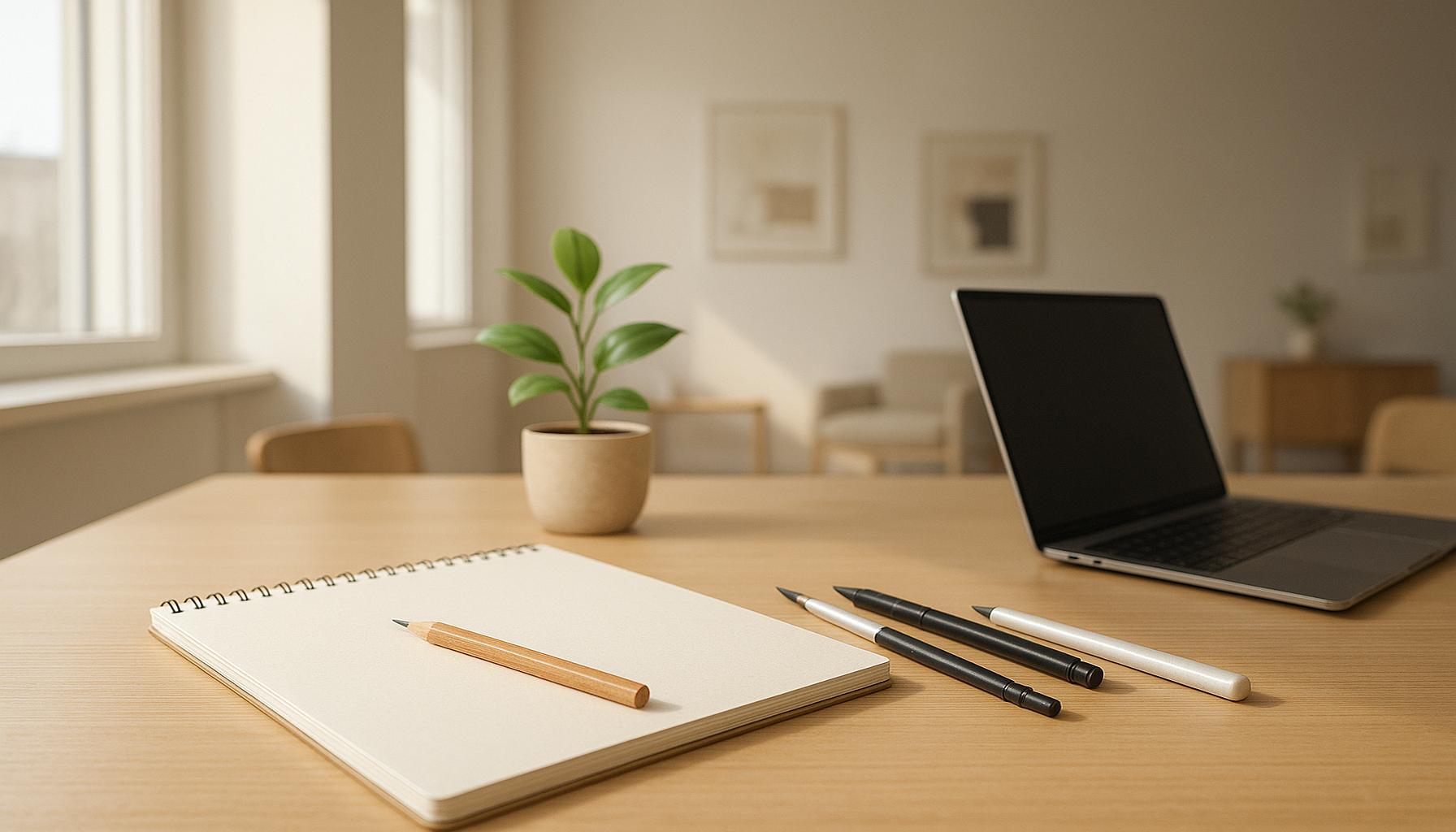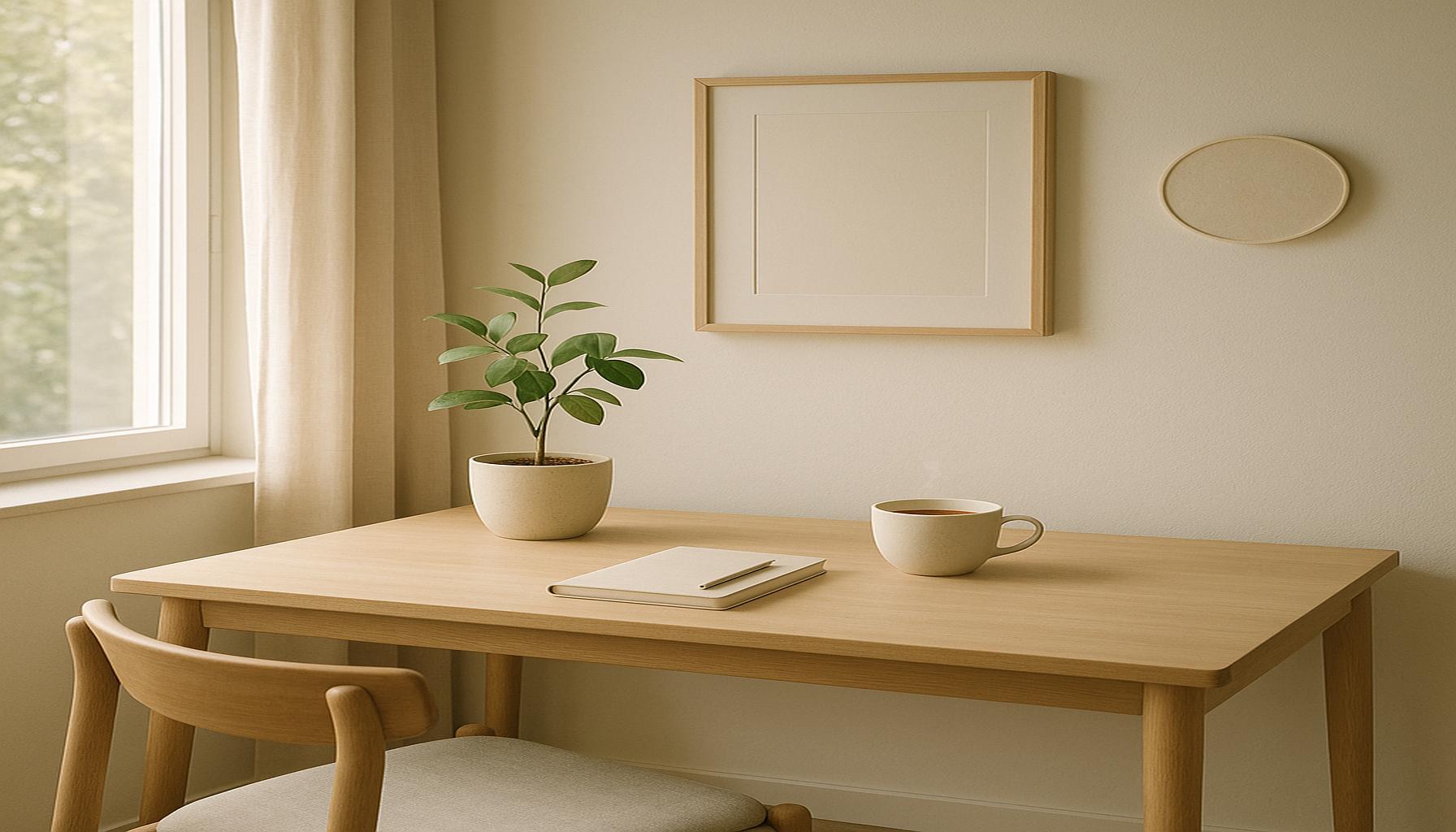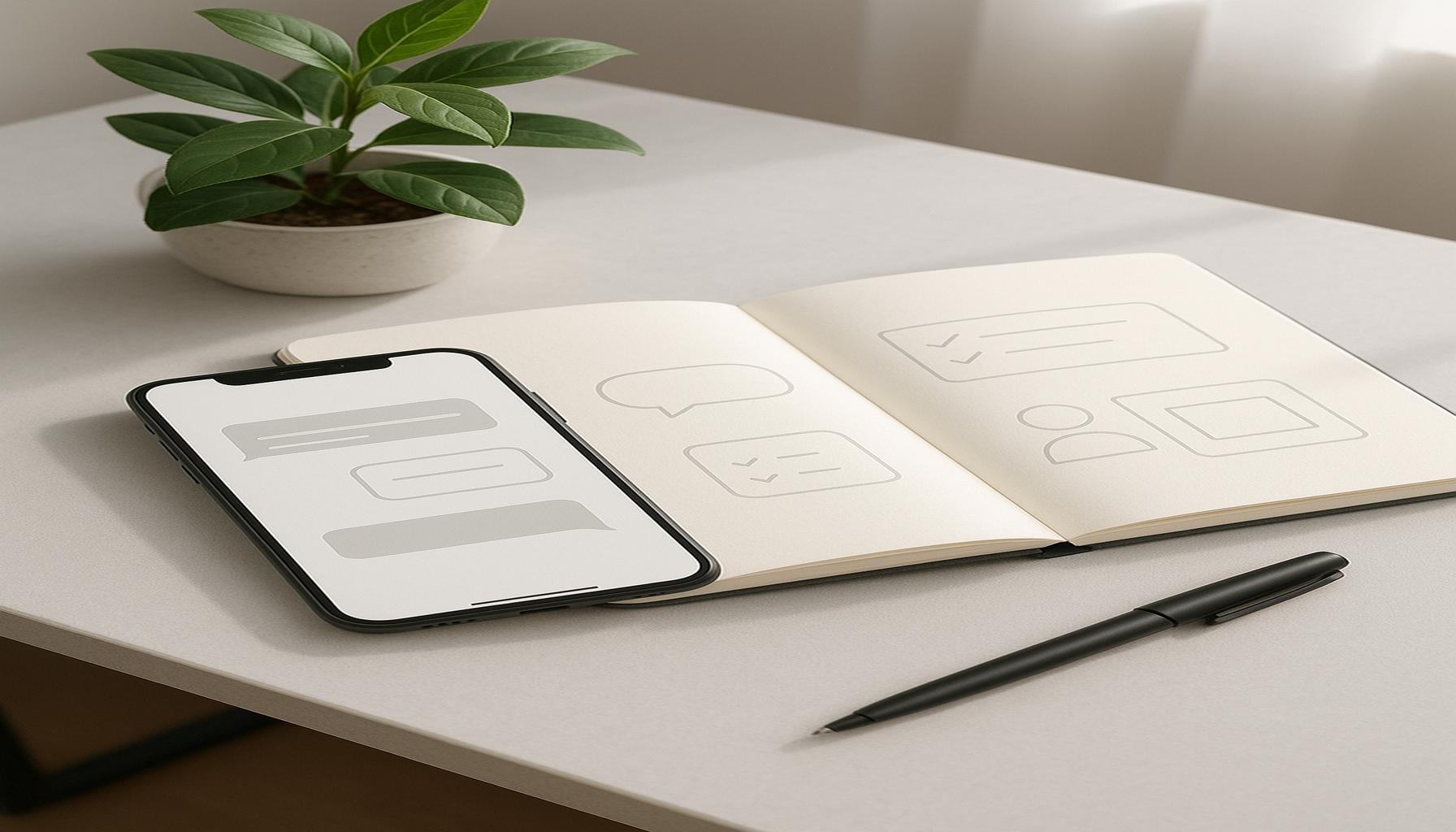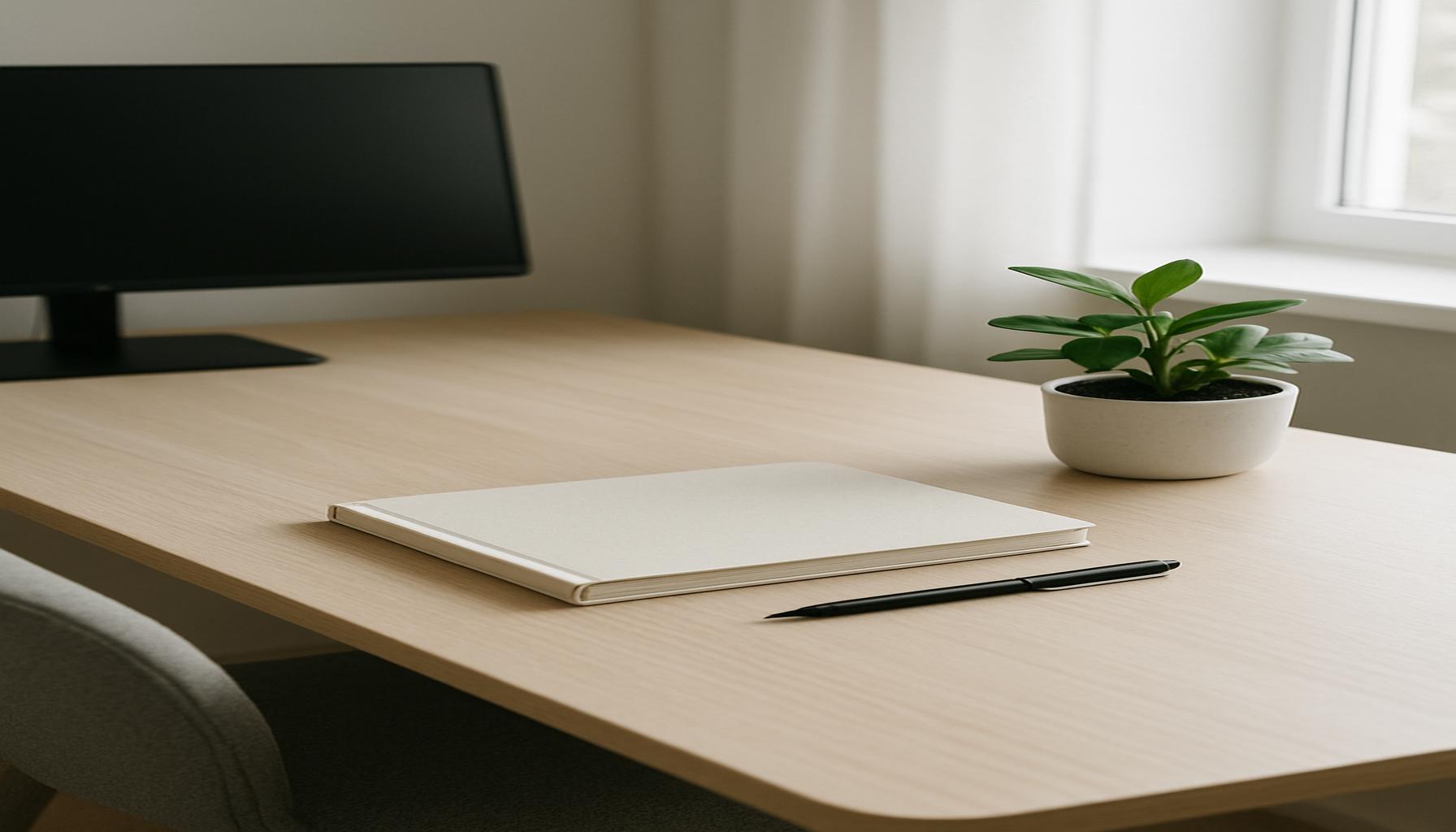The relationship between minimalism and creativity: how an uncluttered space can boost innovation

Embracing Simplicity for Creative Growth
In an age dominated by relentless information streams, from social media notifications to the demands of everyday life, individuals frequently find themselves submerged in a sea of clutter. The accumulation of physical items and digital distractions can lead to overwhelming chaos that stifles creativity and innovation. However, amidst this cluttered environment, there lies an alternative approach—minimalism. By pivoting towards simplicity, individuals create a space that fosters clarity and stimulates creativity.
One of the remarkable benefits of minimalism is the increased focus it promotes. A tidy workspace minimizes visual distractions and allows individuals to channel their attention toward the creative tasks at hand. For example, artists often report that a clutter-free studio aids their creative flow, enabling them to concentrate on their artwork without being diverted by unnecessary elements around them. This enhanced focus can effectively lead to a more profound level of engagement with one’s craft.
Similarly, a minimalist setting can lead to enhanced clarity. By removing the noise and clutter that often clouds judgment, individuals can think more clearly and find innovative solutions to challenges. Research indicates that environments with less clutter create a calming effect, making it easier for the brain to process information. Writers, for instance, may find that a serene, minimalist workspace can help them articulate their ideas with precision and creativity, leading to compelling narratives.
Improved productivity is yet another advantage of adopting minimalism. With fewer possessions occupying space, individuals can more readily access the tools and resources necessary for their creative projects. This simplification of environment allows for more efficient work processes. For example, a graphic designer who keeps only essential design tools on their desk may find it easier to experiment with new concepts without the distraction of extraneous materials.
Numerous studies support the notion that an uncluttered area correlates with greater well-being, enhancing a mental state that is conducive to problem-solving and idea generation. Successful innovators across various fields often credit their creativity to their simple living spaces. Steve Jobs, known for his emphasis on minimalism, famously created a workspace that reflected his design philosophy: simplicity and functionality. His approach serves as a testament to the notion that minimalism can spark groundbreaking innovation.
As we delve further into this intricate relationship between minimalism and creativity, it becomes apparent that the choices we make about our environments can significantly impact our mental processes. Simple adjustments to one’s surroundings can lead to a profound transformation in creativity and productivity. Are you ready to explore the empowering effects of a clean slate? The journey into minimalism is not merely about reducing what you own; it is about enhancing your life and nurturing the creative potential within you.
DISCOVER MORE: Click here to enhance your productivity
Breaking Down the Barriers to Creativity
As we explore the connection between minimalism and creativity, one significant aspect to consider is the psychological impact of clutter on the mind. Studies suggest that a disorganized environment can lead to increased levels of stress and anxiety. This chaotic state of mind can impair creative thinking, making it difficult for individuals to connect disparate ideas and develop innovative solutions. Conversely, a streamlined and uncluttered space has the potential to unlock one’s creative capabilities, enabling a more fluid flow of ideas.
Research conducted by the Princeton University Neuroscience Institute indicates that our brains struggle to focus when surrounded by excessive stimuli. The study revealed that individuals working in a cluttered area exhibited lower levels of productivity compared to those in minimalist settings. The act of decluttering—removing unnecessary items—can lead to significant improvements in mental clarity and creative output. For example, a design studio with only essential materials vastly improves the potential for brainstorming and experimentation, as the mind is free to wander and explore new possibilities without the weight of distraction.
Beyond just enhancing focus, minimalism serves to cultivate intentionality in one’s work. By consciously choosing what to keep and what to discard, individuals foster a deeper connection to their craft. This deliberate process can lead to heightened creativity as it encourages self-reflection and critical thinking. When the environment reflects personal values and intentions, it can inspire new perspectives and innovative approaches.
- Intentionality: Simplifying surroundings allows an individual to prioritize what truly matters to them, promoting purposeful work.
- Themed Workspaces: Creating designated zones for different tasks, each with minimal and relevant items, can enhance focus and creativity.
- Emotional Release: Letting go of physical clutter can be a cathartic experience that releases mental blocks, facilitating fresh ideas.
Moreover, the practice of minimalism fosters a culture of experimentation. When the space is uncluttered, individuals are more inclined to take risks and explore unorthodox ideas. This is particularly evident in creative fields such as art, music, and writing. Notable figures like artist Georgia O’Keeffe embraced minimalist principles in their workspaces, allowing their creativity to flourish in an environment free from distractions. This mindset not only enriches the creative process but also becomes a breeding ground for groundbreaking ideas.
In summary, the relationship between minimalism and creativity is profound and multifaceted. By adopting a minimalist approach, individuals can break down barriers to creativity, promote intentionality, and cultivate a spirit of experimentation. It becomes increasingly evident that the physical space we inhabit plays a crucial role in shaping our mental landscape, ultimately influencing our ability to innovate. As we continue to examine this intricate connection, one must ponder: could embracing simplicity be the key to unlocking your creative potential?
The Psychological Impact of Minimalism on Creativity
Minimalism has a profound psychological impact on individuals, fostering an environment that encourages creative exploration. In an uncluttered space, the mind is less distracted, allowing ideas to flow freely. Research suggests that visual clarity can enhance cognitive processes, leading to higher innovation levels. This effect is particularly evident in work environments where clutter can hinder productivity and creative thinking.
Creating an Intentional Workspace
A minimalistic approach encourages individuals to curate their environment intentionally. By thoughtfully selecting which items to keep and which to remove, creators can establish a workspace that reflects their goals and values. This intentionality helps to reinforce focus, allowing innovative ideas to emerge without the chaos of unnecessary distractions. Designers, artists, and writers often find that a simplified workspace fosters deeper connections to their projects, enabling profound insights.
Real-World Examples of Minimalism Enhancing Creativity
Several successful brands embody the principles of minimalism, notably in their office designs. Companies like Apple and Google implement open, uncluttered spaces to encourage collaboration and creativity among their teams. These environments not only boost morale but also promote an open exchange of ideas, essential for driving innovation. By analyzing these models, creative professionals can draw inspiration and apply similar principles to their personal workspaces.
| Advantage | Description |
|---|---|
| Enhanced Focus | An uncluttered space promotes concentration, enabling deeper thinking. |
| Increased Creativity | Less distraction leads to a flow of ideas and innovative solutions. |
Understanding the link between minimalism and creativity transforms how we approach design and innovation. By implementing minimalistic principles, individuals can unlock their potential and enhance their creative output in any setting.
DISCOVER MORE: Click here to delve deeper
Curating Your Creative Environment
Another fundamental aspect of the relationship between minimalism and creativity lies in the concept of environment curation. A carefully curated workspace—a blend of intentional decor, functional design, and minimal distractions—can play a critical role in fostering creativity. In the United States, innovative companies such as Google and Apple have adopted open, minimalist office spaces that stimulate collaboration and creativity. These environments encourage employees to think outside the box, showcasing the transformative power of minimalism.
The principle of functional design is integral to creating a conducive environment for creativity. Implementing modular furniture, soft lighting, and neutral color palettes not only enhances aesthetic appeal but also helps individuals feel more grounded and productive. For instance, many successful artists have modified their studios to reflect not merely personal style but a workspace that aligns with their creative expressions. Renowned author Ernest Hemingway maintained a simple desk with just a typewriter and a few essential books, illustrating how an uncluttered space can nurture focused thinking and productivity.
Moreover, the ability to customize one’s workspace can enhance creativity significantly. Personalized elements, such as artwork, plants, or inspirational quotes, can invigorate a minimalist environment without overwhelming it. The gentle presence of nature, for instance, has been shown to enhance cognitive function and reduce stress, paving the way for more innovative ideas. Research published in the Journal of Environmental Psychology indicates that even small plants in a workspace can boost creativity and increase feelings of well-being. These elements remind us that minimalism does not equate to a lack of character; rather, it emphasizes the importance of quality over quantity.
- Natural Light: Maximizing natural light in a workspace can not only improve mood but also enhance cognitive abilities, providing a clean slate for creative processes.
- Quiet Zones: Establishing areas specifically designated for quiet reflection or brainstorming can promote deeper thought, enabling a seamless flow of ideas.
- Multi-functional Spaces: Designing workspaces that serve multiple purposes can invigorate the creative spirit, allowing for diverse experiences within the same environment.
In addition to physical settings, the principle of minimalism can extend to digital clutter as well. A streamlined digital workspace—such as minimal browser tabs, organized folders, and a reduced number of applications—can mirror the benefits of an uncluttered physical environment. Tools like Trello or Notion can aid in achieving digital minimalism by consolidating tasks and ideas, rendering the creative process more straightforward and organized. The tech-savvy professionals in Silicon Valley are increasingly emphasizing the importance of digital minimalism, recognizing that clarity in the digital realm can significantly enhance creative outputs.
This dual approach of decluttering both physical and digital spaces encourages a holistic view of creativity, reinforcing the idea that minimalism isn’t simply about reducing items, but rather about optimizing environments for maximum creative potential. As we delve deeper into this compelling connection between minimalism and innovation, the question remains: how will an intentional, uncluttered space shape your unique creative journey? The potential for growth and exploration within a minimized framework is vast, echoing the age-old axiom that sometimes less truly is more.
DIVE DEEPER: Click here to enhance your focus
Embracing Minimalism for Enhanced Creativity
In conclusion, the relationship between minimalism and creativity is increasingly evident as we explore the profound impact of an uncluttered space on innovation. As demonstrated by forward-thinking companies like Google and Apple, a minimalist environment not only fosters collaboration but also removes barriers to creative thought. The importance of functional design trends—from modular furniture to the strategic use of natural light—underscores how simplicity can breed clarity and direction, essential ingredients for innovative ideas.
Importantly, the pursuit of minimalism extends beyond the physical realm; managing digital clutter is equally critical in today’s tech-driven world. By organizing our digital workspaces and utilizing tools designed for efficiency, we align our creative processes with the principles of minimalism, enhancing productivity and focus.
Ultimately, the task of curating an inspiring workspace—whether in a corporate office, an artist’s studio, or a personal desk—serves as a continuous journey. Personalized touches, thoughtful layouts, and intentional distractions can all coexist within a minimalist framework that values quality over quantity. The evolving dialogue around minimalism and creativity invites us to reassess our environments, inspiring a deeper investigation into how our surroundings influence our capacity for innovation.
As we consider our own creative spaces, let us ask ourselves: how might embracing a simpler aesthetic deepen our creative journey? Embracing minimalism doesn’t just offer a cleaner space; it sets the stage for a more inspired, innovative future.


